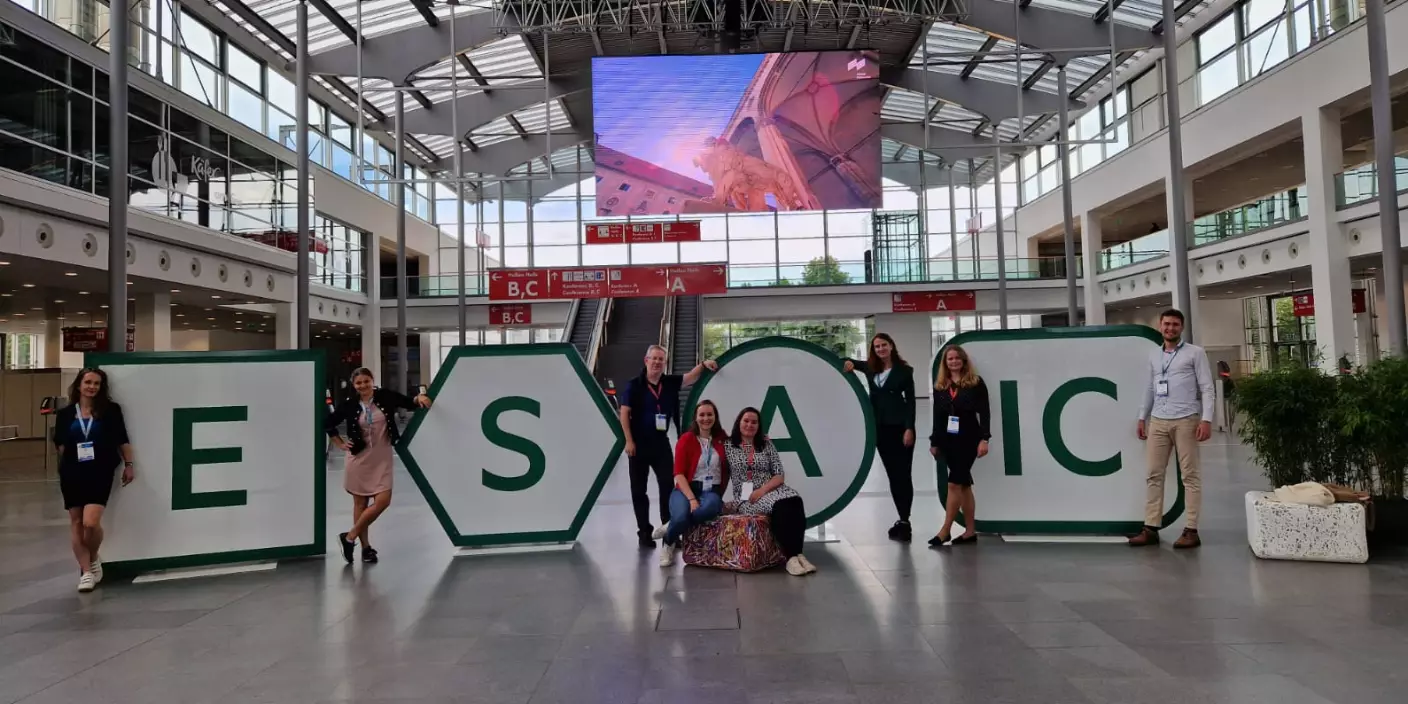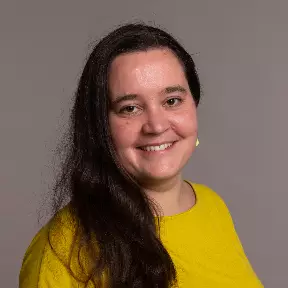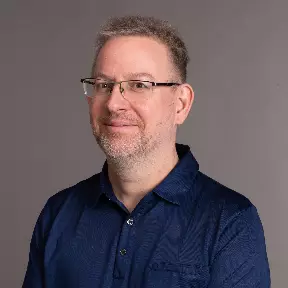Veronika Valouchová M.D. (Faculty of Medicine, Masaryk University, Brno)
This year's Euroanaesthesia conference in Munich was my first major experience with an international congress. Our student group was impressed by the diverse range of the programme, both in terms of topics and formats. I was particularly interested in the thematic series of presentations devoted to EEG. The lectures covered the interpretation of EEG and the pitfalls of its use, with a focus on the specifics of different patient groups, the drugs used, and the various fields of intervention - all in an engaging and practically applicable form. Another lecture was dedicated to the different indices used in clinical practice, including comparing these systems and raw EEG data. It was also inspiring to hear about another speaker's experience with implementing these methods. Furthermore, the programme featured topics on soft skills and science, such as the issue of predatory articles and publication retraction, which is quite relevant to our field. It is reported that approximately 60% of all retractions are related to publications from the medical and biochemistry research environment.
Finally, I would like to thank the AKUTNĚ.CZ Foundation and the other expedition members for a unique experience that has broadened my horizons and positively motivated me.
Pavel Pískovský (Faculty of Medicine, Masaryk University, Brno)
It was the first time I had the opportunity to go to a conference of this type, so in this report, I will give you a closer look at the congress days through the eyes of a student. The program brought a wide range of talks that were presented in blocks of different formats. Meet the expert or lecture, which is usually focused on one topic through the eyes of one expert. In contrast, 10 Minutes to Convince revealed the latest findings on a given topic in four consecutive ten-minute presentations. An interesting format that raised numerous questions and comments from the audience was the pro-con debate, where the topic was explained from two different perspectives. Panel discussions then offered even greater interaction with the audience.
To give an idea of the specific lecture, I decided to mention the research presented by Dr. Alexandre Joosten, who specializes in optimizing hemodynamic parameters in peri- and post-operative care. To do this, he uses a closed-loop system that aims to minimize mean arterial pressure deviations. Based on continuous monitoring and evaluation of the trend of pressure changes, this system selects the ideal drug dosage, which, according to the presented results, leads to significantly lower pressure fluctuations than the same work performed by staff. However, at the end of the lecture, Dr. Joosten emphasized that this new technology should not lead to a reduction in attention to patient care and pointed out the importance of a comprehensive approach.
I rate all three days as beneficial and enriching. I take away not only a lot of new information but also nice memories of our evenings together and the Bavarian capital bathed in sunshine. I want to thank the NF Akutně for the opportunity to participate and the entire AKUTNĚ.CZ expedition for the pleasant atmosphere.
Kateřina Dostálová (Faculty of Medicine, Masaryk University, Brno)
A view of Munich from the highest point in the city, an exhibition center teeming with anaesthesiologists from around the world, a walk through the sunny English Garden, evening dinners enjoyed together, and the victory of the Czech team at the Ice Hockey World Championship — these are just a few impressions that remain vivid in my mind from the four busy days spent in Munich.
Every day of the congress, the opportunity to attend various lectures, try out several simulators, and hear inspiring contributions during the poster sessions were offered. If I had to pick one topic to describe further, it would be 'Non-pharmacological Approaches to Increase Patient Comfort in Local Anaesthesia.' In the first part of this lecture session, Dr Boselli (France) explained the concept of hypnotic communication. Using data from his research, he demonstrated why communication with the patient is crucial and how the right choice of words can alleviate the patient's fears and painful experiences. He compared the doctor to a magician who can distract the patient from an unpleasant procedure. He then introduced the audience to common phrases doctors use and suggested alternatives. In the second part, Dr Fusco (France) emphasized that it is not just about positive wording alone but about a comprehensive and individualized approach to each patient. The third part focused on using VR methods and listening to music during local anaesthesia. According to the data presented, both methods led to a reduction in anxiety and postoperative pain. Patients exhibited increased parasympathetic activity and reported higher satisfaction levels after the procedure. In a later discussion, the two French physicians noted that these methods also have great potential in the pediatric population. In the final session, Dr Roelants (Belgium) presented non-pharmacological interventions during labour epidural anaesthesia. Besides the already mentioned importance of communication, she explained how respiratory techniques can help manage painful uterine contractions. She also described the “yes-set” method, in which she gradually obtains the patient’s consent and uses her questions to change the patient's mindset. She further explained hypnosis and subsequent post-hypnotic suggestion. The whole session was then concluded with a video demonstration of how Dr Roelants performs epidural anaesthesia.
The Czech AKUTNĚ.CZ line-up in Munich showcased its team spirit and coordination, much like the Czech hockey players who triumphed on that memorable Sunday evening. Thanks to AKUTNĚ.CZ for allowing us to witness this as students, and I greatly appreciate the opportunity to attend Euroanaesthesia 2024.
Hana Harazim (Department of Paediatric Anaesthesiology and Intensive Care Medicine, Department of Simulation Medicine, Masaryk University, Brno)
This year's EUROANAESTHESIA was packed with visionary lectures that illustrated the future development of our field. In addition to paediatric and obstetric topics, several sessions covered ecology and sustainability issues, artificial intelligence, and modern directions in pharmacotherapy.
Medication safety is an ongoing topic; therefore, I attended a broad panel of experts on this topic. First, Dr Zoumprouli discussed epidural analgesia, which is mainly used in the treatment of post-operative pain and labour pain management. Catastrophic consequences can result from a simple medication error: an epidural mixture given IV, intravenous drugs administered into a catheter (chemotherapy, nutrition, ATB...); this is amplified with the universal distribution of Luer connectors and the storage of medication alphabetically rather than by route of administration. To address human error, we need to acknowledge that it can happen to anyone, identify risk factors, have infusion pumps only for the use of epidural administration, avoid disconnecting the system (to prevent contamination), label catheters and syringes, use specific NRFI connectors, store epidural medications separately, and opt for the lowest possible concentrations of local anesthetics.
Half of the avoidable medical errors are related to the administration of drugs, which is why reporting systems have been developed worldwide since the 1970s. However, not all errors are reported or even recognised - the US is the least concerned about error reporting. According to Dr Wittman, the most helpful approach would be the implementation of large databases of reports, where reports could be submitted via a mobile app by anyone, including NPP or patients, and then be analysed by AI. The most important factor is the culture change, facilitated by an easily accessible and anonymised reporting platform, and the subsequent analysis of the situation and implementation of changes.
Dr. Borisova stressed the relevance of patient safety training at the beginning of anaesthesiology education. She recommended the Essential Patient Safety Management Course, available to ESAIC members online. She also emphasized proper syringe labelling, elimination of similar-looking medications, and establishing a clear organization of the medication storage.
The last speaker, Dr Mellin-Olsen, addressed the pressing issue of drug unavailability. Almost no antibiotics are produced in Europe, with most production in politically unstable countries. Warnings from pharmaceutical companies often come late, making it difficult to respond. The COVID pandemic has affected the production of medicines, as has the war in Ukraine, which produces large quantities of generic medicines. Using medicines from different suppliers increases the chance of medical error, as does any deviation from the norm (e.g., a change in packaging design). Europe is now working to be better prepared by optimizing supply and production chains for essential medicines, as this issue is expected to persist for a long time.
Tereza Prokopová, M.D., Ph.D. (KARIM FN Brno, ISM LF MU)
On Saturday, I attended the 'All I Want to Know About EEG' session, which focused on EEG monitoring during anaesthesia. It highlighted the importance of evaluating spectral displays and EEG curves rather than relying solely on dimensionless indices, which can yield false positives or negatives, particularly in marginal populations such as seniors and pediatric patients. The new guidelines for managing patients with ARDS were presented in another lecture. An intriguing panel on 'Lung Protective Ventilation' in patients with obesity addressed the pathophysiological differences in ventilation and lung perfusion in morbidly obese patients during UPV under general anaesthesia. The key takeaways included the importance of patient positioning—ideally in the beach-chair position—extubation to CPAP and the potential use of recruitment manoeuvres if the ventilation is difficult.
On Sunday, I attended sessions on Traumatic Brain Injury and the relevance of current guidelines. A lecture module on anaesthesia in the postoperative period emphasized ERAS protocols and optimising postpartum analgesia. The development of regional anaesthesia techniques, such as TAP blocks introduced postoperatively for C-section pain management, was discussed. In the Pro-Con discussion 'Multiple Drugs in One Syringe,' arguments for and against combining multiple drugs in a single syringe were explored. The most debated combination was Propofol and ketamine, commonly used in emergency medicine. Propofol with remifentanil was also discussed, noted for reduced fluid load and fewer dispensers, especially in pediatric anaesthesia. However, challenges include managing the analgesic component and the limitations of most TCI regimens.
On Monday, the lecture session on 'Acute Kidney Injury During Sepsis' featured a vivid discussion on the role of loop diuretics in managing AKI and the timing of RRT initiation. It remains unproven that loop diuretics reduce patient mortality, nor has "preventive" dialysis as part of RRT initiation been shown to reduce mortality. Recommendations continue to suggest considering RRT for severe metabolic acidosis, hyperkalemia, and fluid overload.
I would like to express my gratitude to the SMAI CSARIM Mobility Fund for supporting my attendance at this congress.
Kamil Vrbica, M.D. (KARIM FN Brno)
Euroanaesthesia 2024 took place in Munich at the modern Messe congress center. For three days, in several halls and at many stations, the most renowned speakers of the European anesthesiology and intensive care scene guided us through the most interesting topics and innovations in our field. The truly interesting part was also a presentation of the new guidelines for antagonising direct anticoagulants - in a perioperative setting or during bleeding. The guidelines offer a comprehensive guide on dealing with this increasingly common issue, neatly organized according to the specific clinical situations. These new insights filled us with almost as much optimism and joy as when the Czech team won the World Hockey Championship, which we also managed to watch during Euroanaesthesia 2024.
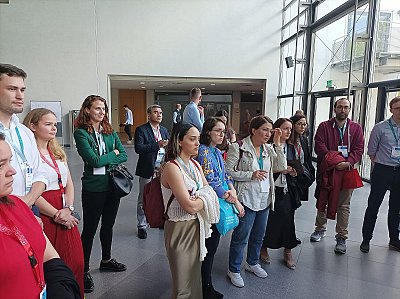
The poster section has...
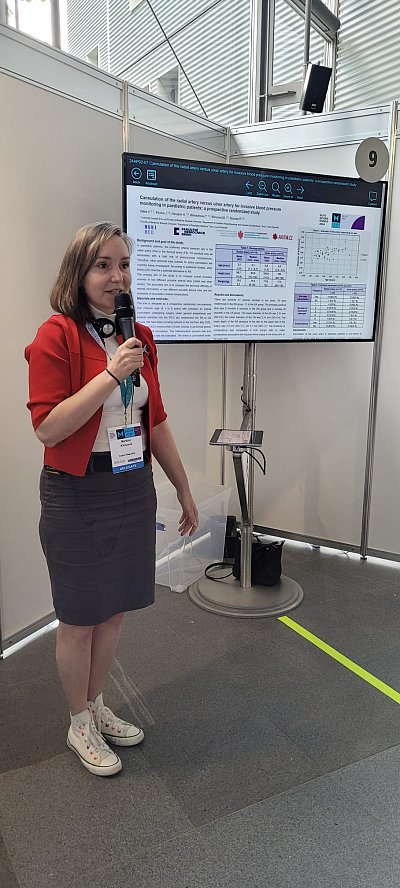
Dr. Martina Klincová p...
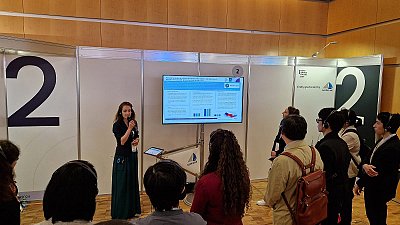
Dr. Hana Harazim prese...

Ceremonial announcemen...

Only the third holder...
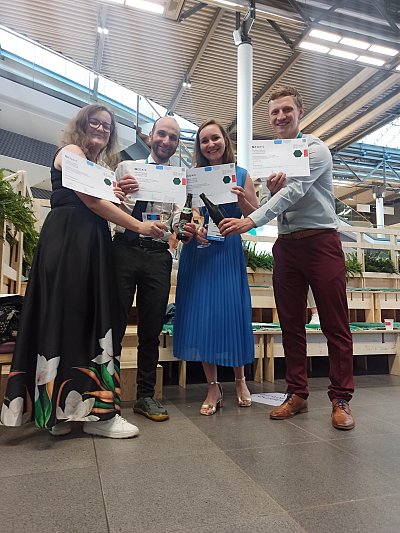
In 2023, the prestigio...

Dr. Hana Harazim talks...

Bronchoscopic simulato...
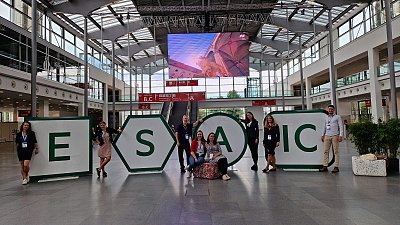
AKUTNE.CZ expedition t...

Olympic Park

The view from the Olym...

Opera House in Munich
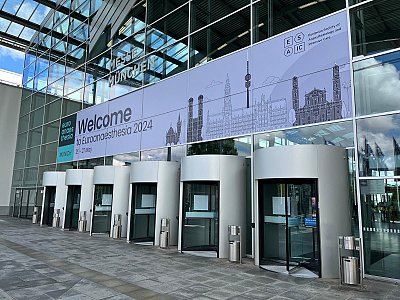
Messestadt Munich
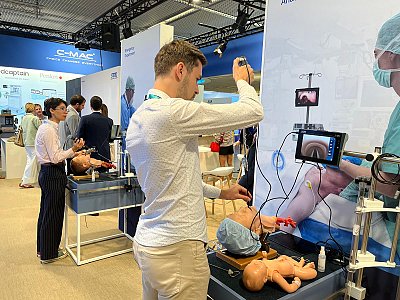
Industry Exhibition

Kate, Pavel, Veronika
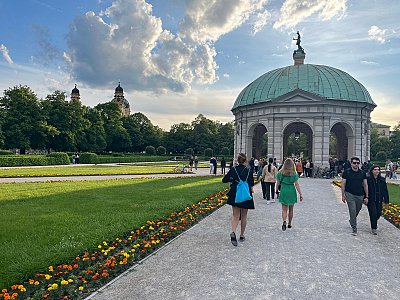
Hofgardenpark
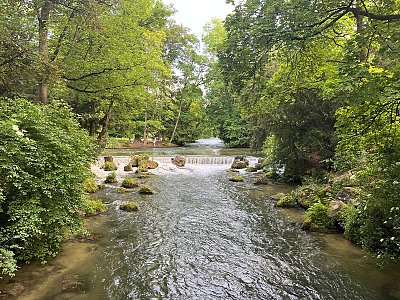
English Garden Park

Rathaus
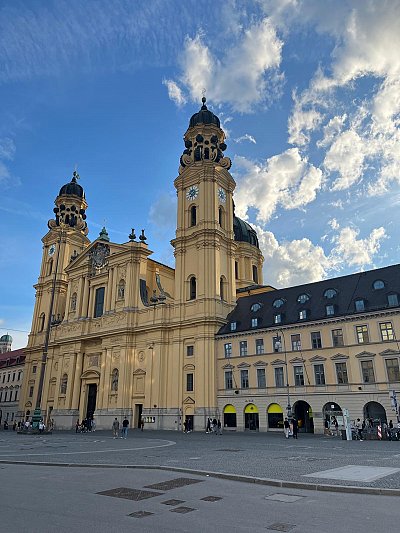
Theatinerkirche
